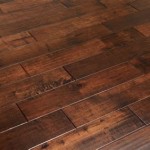Installing vinyl plank flooring can be a great way to update a home’s look and feel. Vinyl plank flooring is durable, easy to maintain, and reasonably priced. When it comes to installation, however, there are many factors to consider, from the type of vinyl plank flooring you choose to the size of the area you’re covering. By taking the time to calculate the cost of installing vinyl plank flooring, you can ensure that your project stays within budget.
Steps to Calculating the Cost of Vinyl Plank Flooring Installation
Calculating the cost of installing vinyl plank flooring can be broken down into several steps. Here’s what you’ll need to do:
- Determine the type and size of vinyl plank flooring you’ll need.
- Calculate the square footage of the area you’re covering.
- Determine the cost of the materials and tools you’ll need.
- Calculate the cost of labor.
- Add up all the costs to get the total cost of installation.
Types of Vinyl Plank Flooring
The type of vinyl plank flooring you choose will affect the overall cost of your installation. There are several different types of vinyl plank flooring available, including luxury vinyl plank (LVP), luxury vinyl tile (LVT), and waterproof vinyl plank (WVP). Each type has its own advantages and disadvantages, and the cost of each type varies. Before you begin calculating the cost of your installation, it’s important to determine which type of vinyl plank flooring you’ll need.
Calculating Square Footage
Once you’ve determined the type of vinyl plank flooring you’ll need, you’ll need to calculate the square footage of the area you’re covering. To do this, measure the length and width of the area you’re covering and multiply these numbers together. For example, if you’re covering an area that is 10 feet long and 10 feet wide, the square footage would be 100 square feet.
Cost of Materials and Tools
Next, you’ll need to calculate the cost of materials and tools you’ll need for the installation. This includes the cost of the vinyl plank flooring, adhesive, and any other materials or tools you may need. Be sure to factor in any discounts or special offers that may be available. Once you’ve calculated the cost of materials and tools, add this to the total cost of the installation.
Calculating the Cost of Labor
The cost of labor is another factor to consider when calculating the overall cost of installing vinyl plank flooring. Labor costs will vary depending on the size of the project, the complexity of the installation, and the experience of the installer. Be sure to get an estimate from a qualified installer before committing to the project.
Adding Up the Costs
Once you’ve calculated the cost of the materials and tools, labor, and square footage, you can add these together to get the total cost of the installation. Be sure to account for any additional costs such as permits, taxes, and other fees that may be necessary. With this information, you can get a better understanding of the financial commitment you’re making for your installation.
Conclusion
Installing vinyl plank flooring can be a great way to update your home and make it more comfortable and stylish. By taking the time to calculate the cost of installing vinyl plank flooring, you can ensure that your project stays within budget. Start by determining the type and size of vinyl plank flooring you’ll need, calculating the square footage of the area you’re covering, and determining the cost of materials and tools. You’ll also need to factor in the cost of labor and any additional costs. Add all these costs together to get a better understanding of the financial commitment you’re making for the installation.















Related Posts








